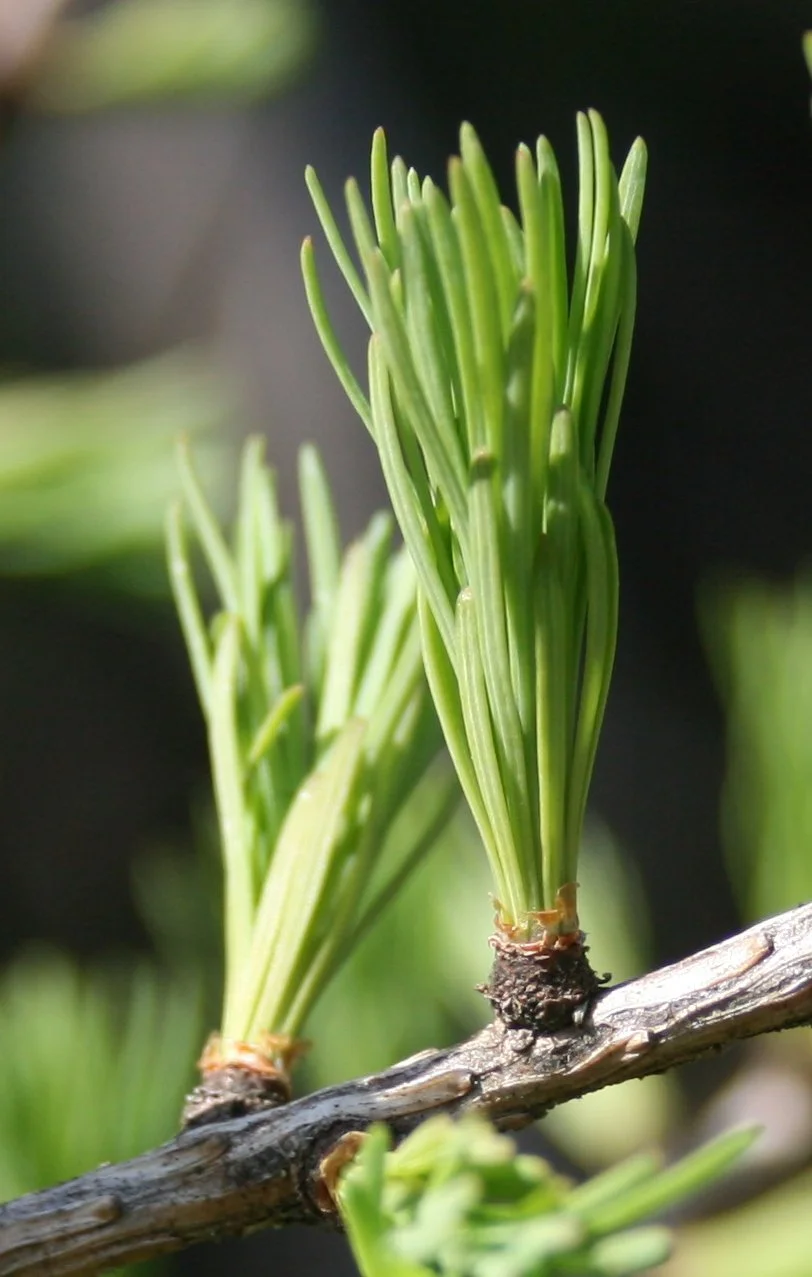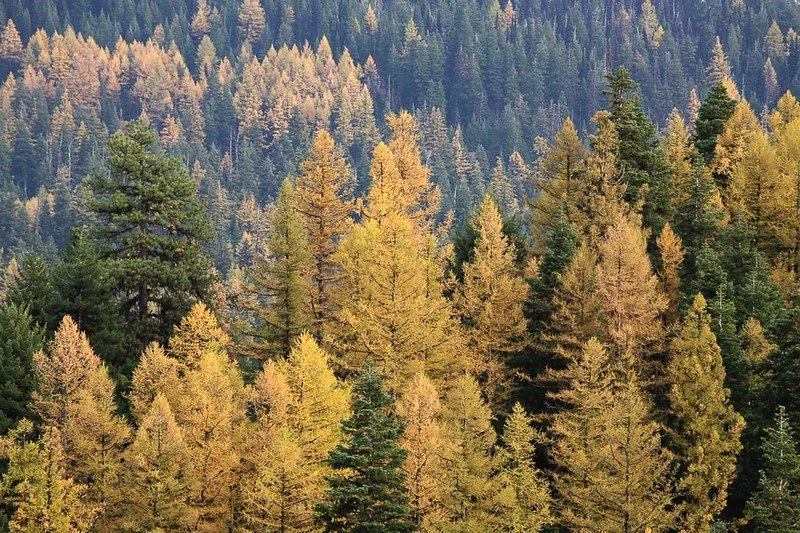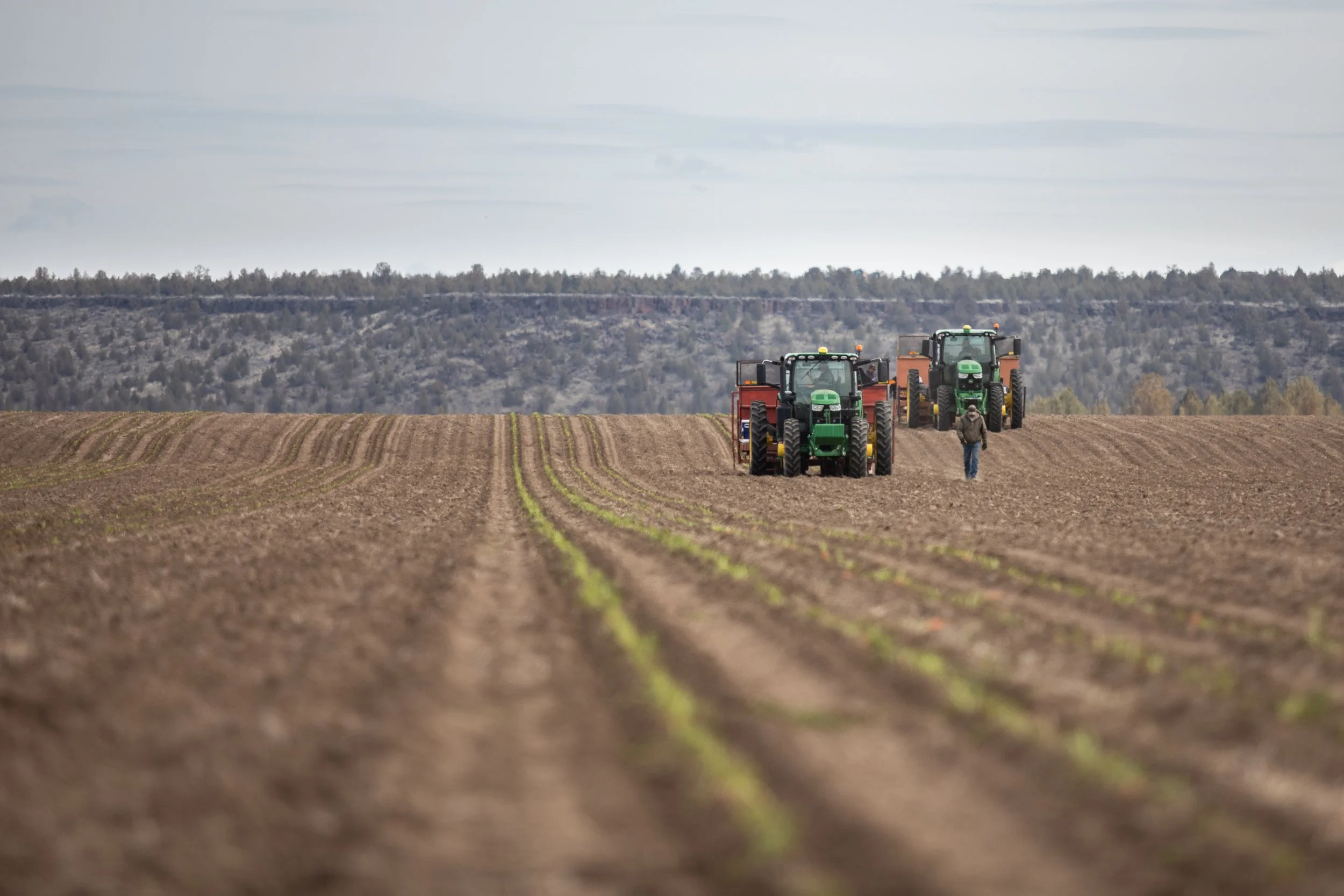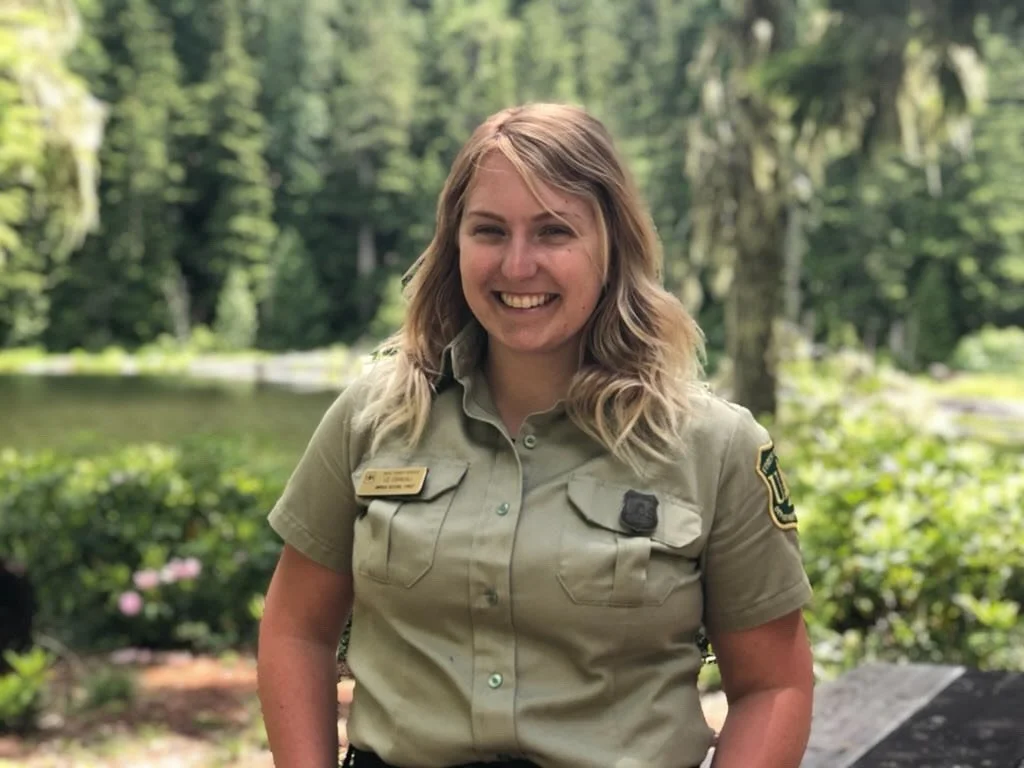Find Trees Turning Gold
Our Western larch stands are among Central Oregon’s most spectacular seasonal displays
by Lace Thornberg, Communications Director
Delightful in every season, the Metolius River Basin takes on a magical golden cast in autumn. Photo: Wasim Muklashy
A Western larch is a stately tree, soaring up to 90 to 200 feet tall, with branches that spill out in a neat cascade from a narrow crown.
Needle tufts.
Photo: Tom Brandt
It has short needles that radiate out from small woody pegs, in groups of 15 to 30 needles per peg.
These distinctive needle tufts are a beautiful bright chartreuse in spring, but their showstopping season is just ahead.
As daylight shortens and temperatures cool, western larch begin to draw the green chlorophyll out of their needles and deeper into the tree, leaving the needles’ other pigments behind.
While the majority of conifers are evergreen, the Western larch (Larix occidentalis) is one of the select few conifer species that grow and drop a new set of leaves annually, like maples, aspen and other deciduous trees.
By early to mid-October, a larch tree will have turned completely yellow, in sharp and brilliant contrast to its evergreen neighbors.
And that’s when it’s time for you to drop everything and go out for a scenic hike, ride, or drive, because that golden hue lasts a few weeks at most.
Three Places to Find Larches
Shevlin Park
Within Bend city limits, you can see larches on a walk or bike ride through Shevlin Park, on the Shevlin Loop Trail. Along Tumalo Creek, you’ll see larches interspersed on both sides of the trail and you’ll see more when the trail joins up with the aptly-named Western Larch Trail.
Metolius River Basin
Located just south of Camp Sherman, the Metolius Preserve holds a magical larch grove, which you can reach after a short 2 to 3 mile hike from the North Trailhead following Preserve trails. Along with the larches, the area’s Ponderosa pines are majestic.
Photo: Wasim Muklashy
Ochoco National Forest
East of Prineville, the vast Ochoco National Forest holds several options for larches. For a great hike, head to Steins Pillar, where you’ll enjoy larches from the trailhead to the pillar. For a drive, travel along the Canyon Creek Road for an abundant larch display, or look for them around the Deep Creek Campground.
Photo: US Forest Service
How Larches Are Faring
A variety of traits, including their deciduous nature, make Western larch naturally resistant and resilient to damaging insects and fire.
However, as the Northwest Climate Adaptation Science Center notes, western larch populations across the Northwest have significantly declined, due to over a century of fire suppression, timber harvesting, and the interruption of Native American land stewardship.
One thing larch trees are not threatened by is large grand firs. Although the first Trump Administration and Forest Service did try to assert that when they rushed through a proposal to eliminate protections for big and old trees east of the Cascade Crest in Oregon and Washington. That particular proposal in 2020 was halted following a federal judge’s ruling that it violated a trio of bedrock environmental laws. However, logging projects conducted by the USFS continue to target large grand fir for removal under this pretext of protecting large ponderosa pine and larch trees. In fact, large grand firs seldom intermix with those species in Oregon and Washington.
At present, Central and Eastern Oregon are the southernmost reach of the natural habitat range for Western larch. As our climate warms, the natural habitat range for Western larch could push northward, creating uncertainty about the future of this species in the southern parts of its current range.
By keeping a close watch on overall habitat conditions and specific forest proposals, scientists and conservation groups like Central Oregon LandWatch are working to ensure these golden giants remain a part of Central Oregon’s autumn for years to come.
Five Ways to Love Larches
A larch is an easy tree to love. You can give back to the trees that provide you with joy, and wildlife with habitat, in several ways.
Appreciate and share — Join guided walks and share peak color timing with your friends, while gently encouraging people to respect the trees.
Practice leave-no-trace recreation and report problems — Stick to trails. Avoid damaging roots or young trees. Don’t remove cones or seedlings. Report trail maintenance issues and illegal incursions to land managers.
Back science-based forest management and restoration — At a time when science and our public land agencies are under attack, advocating for projects that prioritize science-based conservation strategies on our publicly owned forests is more important than ever.
Central Oregon LandWatch reviews all forest project proposals on the Deschutes and Ochocos National Forests and alerts the community when comments are needed.
Volunteer with local land trusts and forest stewardship groups — Both the Deschutes Land Trust and Friends of the Metolius run stewardship projects and lead public education efforts that help protect larch habitat.
Advocate for climate action — The long-term persistence of larch trees, and everything else, depends on slowing climate change. Whatever we can do to reduce carbon emissions and support local adaptation planning will help larch forests.








